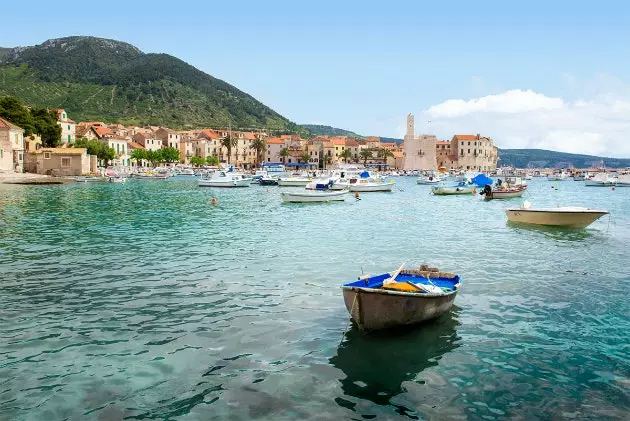
Komiža, one of the main cities of Vis.
There's a letter for me. Upon arrival at the hotel, the receptionist gives me a yellow envelope with my name on it. “Welcome to Croatia. See you at 10 am at the reception. Sincerely, Dino." I read it and a smile escapes me. I imagine a tyrannosaurus rex walking around Split and dodging the remains of columns, Egyptian sphinxes and mosaic fragments, and it seems to me a great plot for a video game . Crazy? Perhaps, but it will be no less delirious to me later run into an emperor hurrying up the stairs or run into a gang of gladiators singing at the top of their lungs under a great dome. And it is that in one city as scenic as this live with anachronisms is the daily bread, as the receptionist tells me: "Just a few months ago Split became a coming and going of chariots, armor and empire suits when some scenes of the fourth season of game of thrones ”.
In the middle of the conversation someone appears asking for me. He identifies. It's dino. And to the disappointment of my glittering fantasies it is not a prehistoric sauropsid , but of the guide in the form of a man of middle age, medium height and medium complexion who will accompany me all morning to visit the city of Split . I ask him about the series and he confirms that, indeed, many of the scenes were filmed a few meters from here, in the old town , and in the nearby Klis fortress , and that since then there are many seriéfilos who follow the route to the letter. But before he tries to get some anecdote from the shooting, he settles the matter and without wasting any more time we cross the door that gives access to Diocletian's Palace, the most outstanding civil works from late antiquity and the main attraction of the city. It leads to a huge brick vaulted room where craft vendors have settled today, and from there what what happens is one surprise after another.
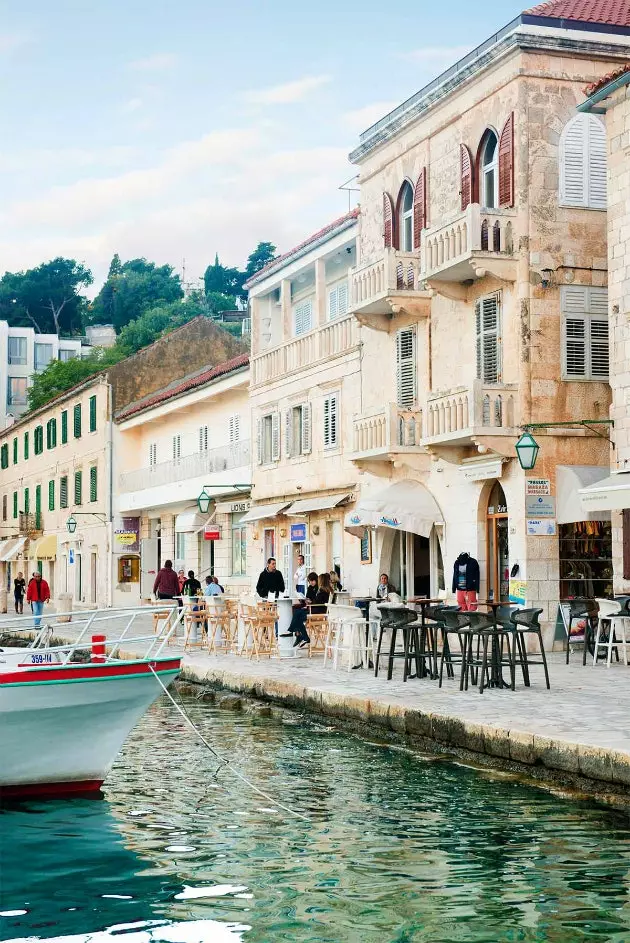
Port of Hvar, in front of which are the Pakleni Islands.
I walk towards the halo of light and I climb the stairs that lead to the impressive spherical dome lobby where the group of singers dressed as gladiators sing a cappella Next to the vestibule the peristyle opens, a monumental square where the emperor made his public appearances and was adored by his subjects. The vestibule, the peristyle, the cathedral and the bell tower of Split: It is a perfect postcard that takes your breath away. Obviously – Dino confirms to me – this was one of the main sets of the recording of the series, and I imagine that it didn't take too many props to set it and dress it all up as medieval and magical.
The truth is that **the second largest city in Croatia** does not need decorations or plots fanciful to catch. Your own story is worthy of a movie plot . Of one that embodies the American dream in a Roman version of the third century and that ends with a moral. It would be summarized like this: diokles , a common soldier born in Salona, climbs the ranks until he becomes Roman Emperor. Fine until now. But Diocletian (as it will be called once crowned) will soon be forget your origins and he becomes a absolutist monarch and tyrant who dedicates his life to persecuting the Catholic faith and enjoying the sumptuous palace that he has built for himself. The ultimate plot twist comes when his successor, constantine , just a few years later, legalize christianity , and over the centuries the mausoleum of Diocletian (who championed the fight against this religion!) becoming a cathedral , where the relics of the martyrs Anastasius and Domnius are venerated.
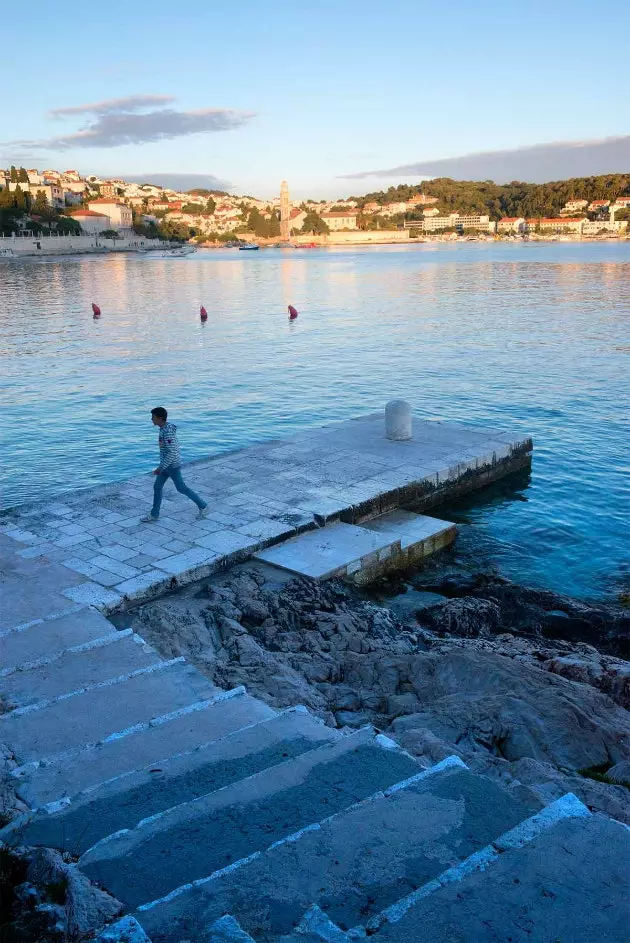
View from a small pier in Hvar.
More than a building diocletian's palace is an authentic city with the typical roman structure inscribed in a rectangle of 215 x 180 m and divided by two great roads, the Cardo and the Decumanus, which communicate with the four great doors. At the back are the soldiers' homes and workshops, while the front was reserved for the ostentatious rooms of the emperor, with various rooms such as the triclinium, the banquet hall or the oriental baths through which we walked. What is now the center of the city is inside the walled enclosure , a living and harmonic set of Gothic palaces, small squares with romantic terraces and restaurants in semi-hidden patios that invite clandestine kisses and endless nights.
But the lively life of Split does not end “intramuros” , but continues beyond the wall, in the streets and squares that were erected over the centuries under the canons of the towns that were present here, such as the pjaca , the always crowded main square, or the prokurative square , a beautiful esplanade surrounded by red arches of Venetian influence. And of course in the river , full of terraces packed with beautiful people , where we say goodbye to the day.
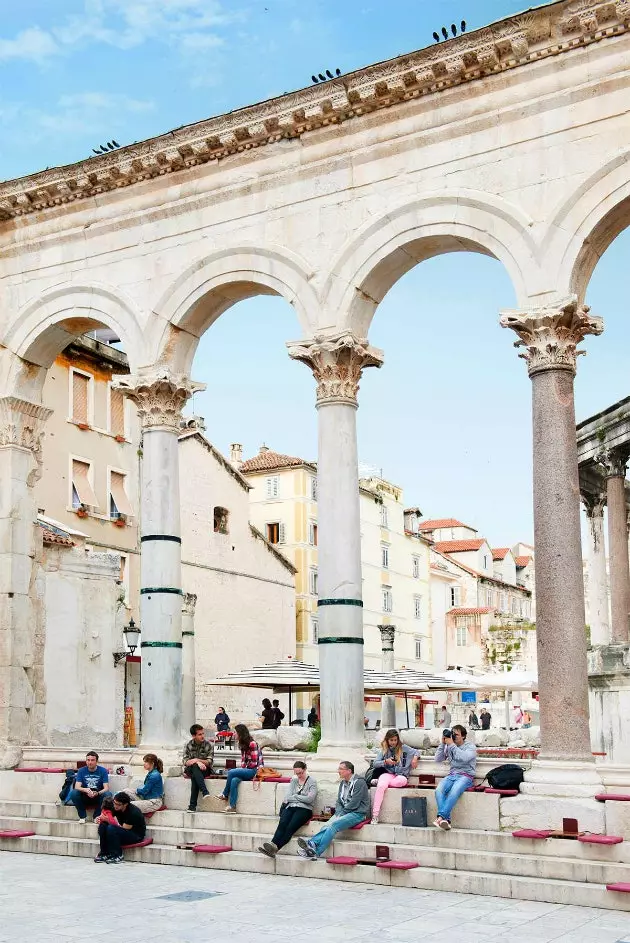
Protiron in Diocletian's Palace (World Heritage Site), in Split.
But in addition to all the attractions that the city itself has, another of Split's strong points is the communication with the islands: Vis, Hvar and Brac which can be reached by ferry in a short time. Although they all share some common features: some heart-stopping beaches, pristine historic quarters and few concrete blocks out of the pot, the truth is that each one has a very different personality.
While Hvar could be something like the little and perky sister of Ibiza Y brac , an ideal paradise for nature tourism and outdoor sports, view is probably the Croatian favorite island. And that is noticeable because hard to recommend . And because when they give up, they do it quietly and with a small mouth as if repenting in advance of revealing their hiding place. No wonder they don't want to share it: here they are some of the best beaches in the country (many of them nudists) and little crowded ; It has the most complete gastronomy (with the main role being fish and a great deal of Italian influence) and also enjoys a quirky nightlife (very different from Hvar), so much so that it is known as the Croatian Jamaican.
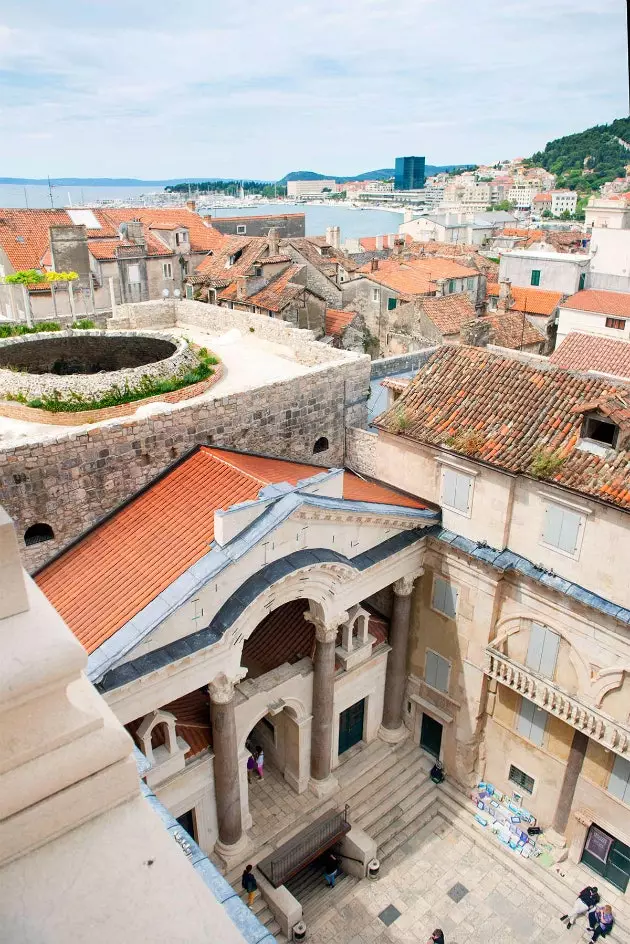
The Cathedral of Saint Domnius, in Split.
That is why the foreigners who arrive have a very specific profile: they are more bohemian, more alternative… and they do not mind running into an added difficulty, the first armor of the island character , which, excuse the redundancy, is here more island than in any of the other islands. And it is that Vis in general is a separate universe , a rare bird worthy of study. It is, on the one hand, because the fact of having been military base until the 60s it has shielded it from tourism until relatively recently. On the other, because, incredible as it may seem, on an island where a total of 3,000 people , its two great 'metropolises', Vis and Komiža, are two completely polarized worlds that they even have different languages (the dialect spoken in Vis is unlike any other in Croatia) .
He explains it to me in detail. Ivica, a young Croatian married to a Galician, Puri, with which he runs the Lola , the restaurant that has given the bell with its successful commitment to the Dalmatian and Catalan fusion cuisine and for his fame of serving the best gin and tonics on the island , in the beautiful garden of a historic building in Vis. After several coffees and several hours of chatting, Ivica offers to act as our ambassador to the island during our stay, but on one condition: that we put ourselves in his hands. Obviously we accepted the challenge and that same afternoon we jumped into the void.
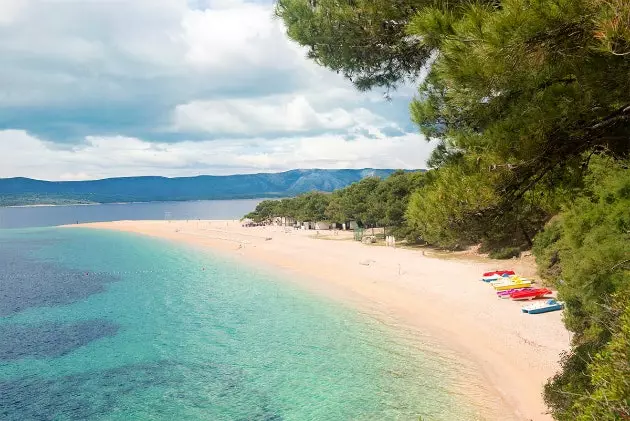
Zlatni Rat beach, whose shape varies with the tides, currents and wind
After 30 minutes by car and 40 walking along the coast with the sunset on our heels , the long-awaited surprise is shaped like a lighthouse, that of Stoncica , northeast of the island, and as a lighthouse keeper, Ivan Bulić , with a certain air to George Clooney and a novel life. He tells us about it while he shows us the interior of the lighthouse, his house, where he alternates his functions as a lighthouse keeper and the carving of his sculptures, which have made him well known within the country. Ivica envies him. I envy him . And even he himself seems to envy himself when he explains his day-to-day life. We dined in a shed decorated with ropes and buoys and slept in a cold, stark room that looked like something out of a boarding school. It's my first night in a lighthouse . And I'm so nervous I can't sleep a wink.
As soon as it dawns we set course back to Vis. The oldest city in Croatia (700 years older than Split) takes shape in a beautiful palm tree villa , a archeological Museum where its symbol is kept (the bronze head of Queen Artemis) and stone buildings with peeling doors that hide authentic mansions , many of them with direct access to the sea and even private docks.
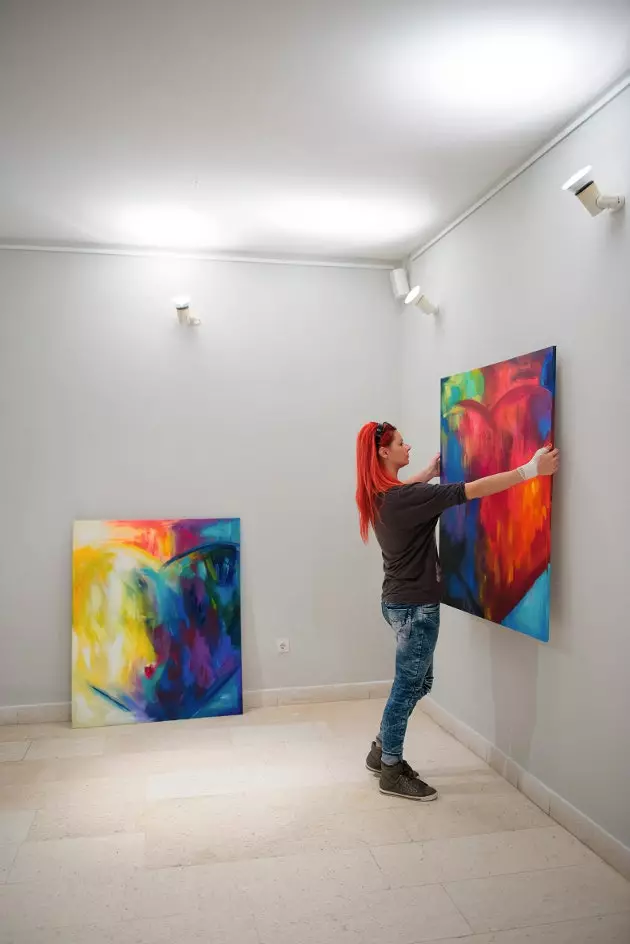
Galerija Muzeja harrow Splita
As Ivica tells me fishing has been the main economic activity here for centuries ; in fact it is said that this was the first fishing village on the Adriatic , and that its fishermen arrived with their boats even to the Galician coasts . Hence, he assures me, many words of the Vis dialect are similar to spanish words and the relationship between the Galician empanada and the sardine and anchovy focaccia eaten here.
However, in Vis you must not lose sight of the interior , where traditions have been more deeply rooted. Mount Hum, the island's highest peak, can be reached walking or cycling and its views have no competitor: the vineyards, the monastery and the panorama of Komiža , the other important city of Vis, its orange-roofed houses and the bay. The landscape is purely mediterranean , with the dry stone terraces, the scattered villages and the so-called domestic restaurants, traditional eating houses, such as the Pol Murvu or Konoba Vatrica , in a building over five hundred years old, where they serve meat or fish trays made in the peka , an ancient method that consists of a bell-shaped metal container that is placed over the coals and in which the food is cooked slowly with its own juices.
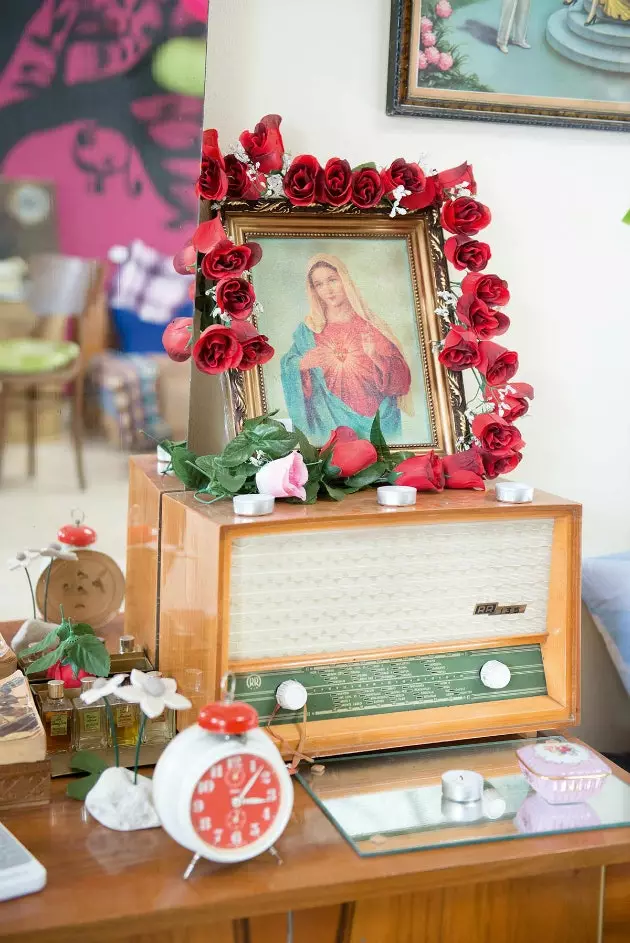
Decoration in the vintage restaurant La Fabrika.
We stop at Roki's Konoba , a small winery that produces wine with the typical grapes of the region, the white –called vugava– and ink –plavac mali– , similar to the California Zinfandel. It is a peculiar place, which has a restaurant and also preserves something truly unusual, the Sir William Hoste Cricket Club , a cricket ground british heritage which hosts a tournament of English teams every year in the month of May. From Vis we take a ferry to Brac, the largest of the central Dalmatian islands, where vineyards, olive groves and orange trees that are still worked with traditional techniques, fishing villages, small Romanesque churches and monasteries nestled in remote places, such as the one in Pustinja Blaca.
But really what has brought us here is the most famous beach on the island (and probably in all of Dalmatia), Zlatni Rat , also known as The Golden Horn or Promontory , due to its shape of a tongue of sand that changes with the tides and waves and that can reach half a kilometer. “The nature of Brac clearly marks the tourist offer of the island”, Benoît, a Basque-French surfer, tells me. “The wind that blows in the channel that separates Brac and Hvar is responsible for these huge waves that you see, which is why it is so good for water sports, especially surfing and windsurfing.”
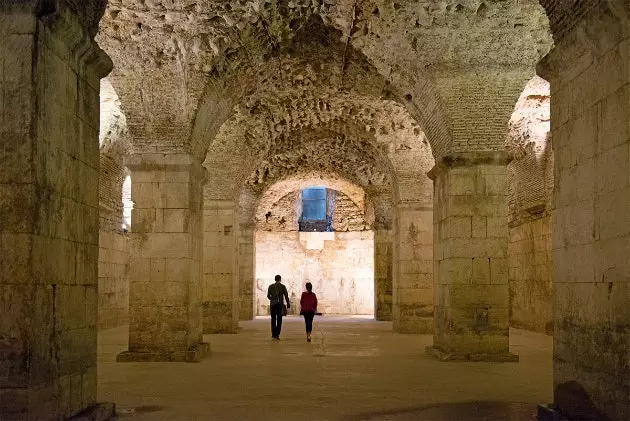
Underground room in Diocletian's Palace, Split.
If Brac has the most beautiful beach –or at least the best known– in the archipelago, it is also world famous for another compelling reason: stone has been removed from its quarries to build some of the most emblematic buildings in the world , such as Diocletian's Palace in Split, the Hagia Sophia in Istanbul and, more recently, the White House or the United Nations building in New York. That's why Francesca, a student of Fine Arts from Padua , she has come here to see first hand the white stone quarries that supply these buildings.
And if Brač is recognized by its beaches and its stone, the island of Hvar, is considered the most exclusive holiday destination in the country. The ' Croatian Cote d'Azur ’, or ‘Ibiza’s little sister’, shares several characteristics with the Balearic island. The first, and most important, despite her fame as a tireless sleepwalker , is much more than the new nightclub on the Adriatic. The second, that its population during the summer season is multiplied by three (it goes from 3,800 to more than 12,000), while in winter it remains a peaceful and quiet place. And the third, which in recent years has received visits from an endless list of class AA celebrities that range from Tom Cruise to Carolina de Monaco . The same Eva Longoria celebrated her wedding anniversary with Tony Parker here , and others like Beyoncé, Steven Spielberg, Gwyneth Paltrow or Kevin Spacey they can be seen on their beaches. But maybe it was the holidays that the prince harry he spent here the ones that most spread the image of him throughout the world. This is how Lucy and her friends met her a few years ago, some thirtysomething Londoners who are already completely loyal and who repeat the same routine every day: back and forth on the beach, cocktail at sunset in the Hula Hula and dinner at Divine , facing the archipelago of the Pakleni Islands, 21 islets that protect Hvar from the southerly winds with insane coves. And at night... to give it all Carpe Diem , the trendy place with the best party and the DJs of the moment.
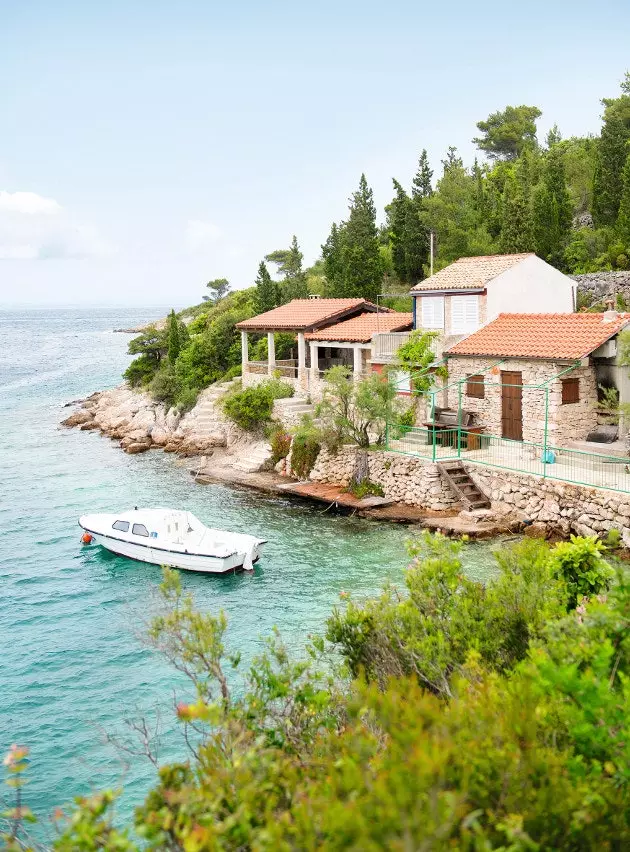
Small pier on the island of Vis, the favorite of the Croatians.
to guess why Hvar is called the island of sun and lavender , you don't have to be a bloodhound: you have more than 2,700 hours of sunshine per year and in spring this flower covers and perfumes a large part of its territory. The city of Hvar, the main population center , was an important port that was closely linked to Venice, hence Saint Stephen's Square (here it is known simply as a square and is said to be the largest in the entire archipelago ) can move with the mind of a stroke to Italy , with its mixture of architectural styles, its church with a Renaissance façade and the oldest public theater in Europe, from 1612. It is a whole showcase of village life , but to get to know it in depth and enjoy its corners, you also have to wander through its historic, pedestrian and labyrinthine center , which is part of a 13th century wall, and climb up to the Spanish fortress (known by this name because it was built by two Spanish engineers).
But if the option is to discover your B-side , the quietest part of Hvar, you only need to walk a few 15km north , to get to Stari Grad, a seaside town famous for its monastery dominican and the Tvrdakh castle and for its **past poets (Petar Hektorović) ** and its current artists. It's one of the hundreds Of Dalmatian Charms, which perfectly reflects the slogan with which Croatia sells itself to the world: the Mediterranean as it was: blue, sunny… and without concrete.
_* This article is published in the June 85th issue of the Condé Nast Traveler magazine and is available in its digital version to enjoy on your preferred device. _
* You may also be interested in... - Unseen corners of Croatia: Sv. Klement Island - Kvarner Gulf in 6 points: the other Croatian coast - Croatia, from Diocletian to Beyoncé - The most beautiful villages in Croatia - 16 reasons why How long are you taking to get to know Croatia?
